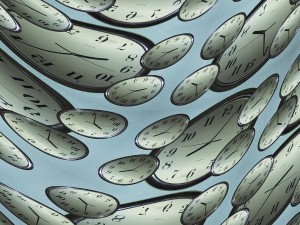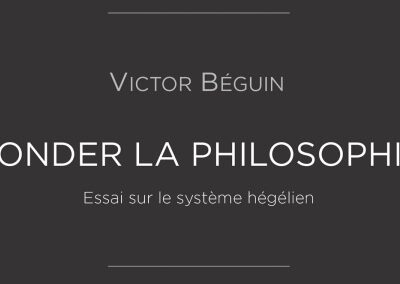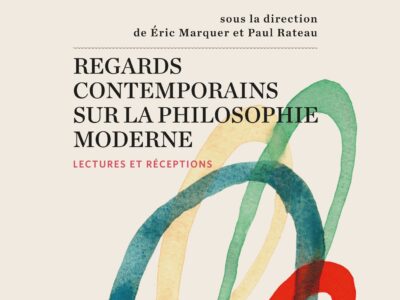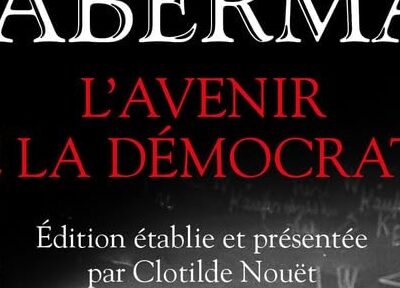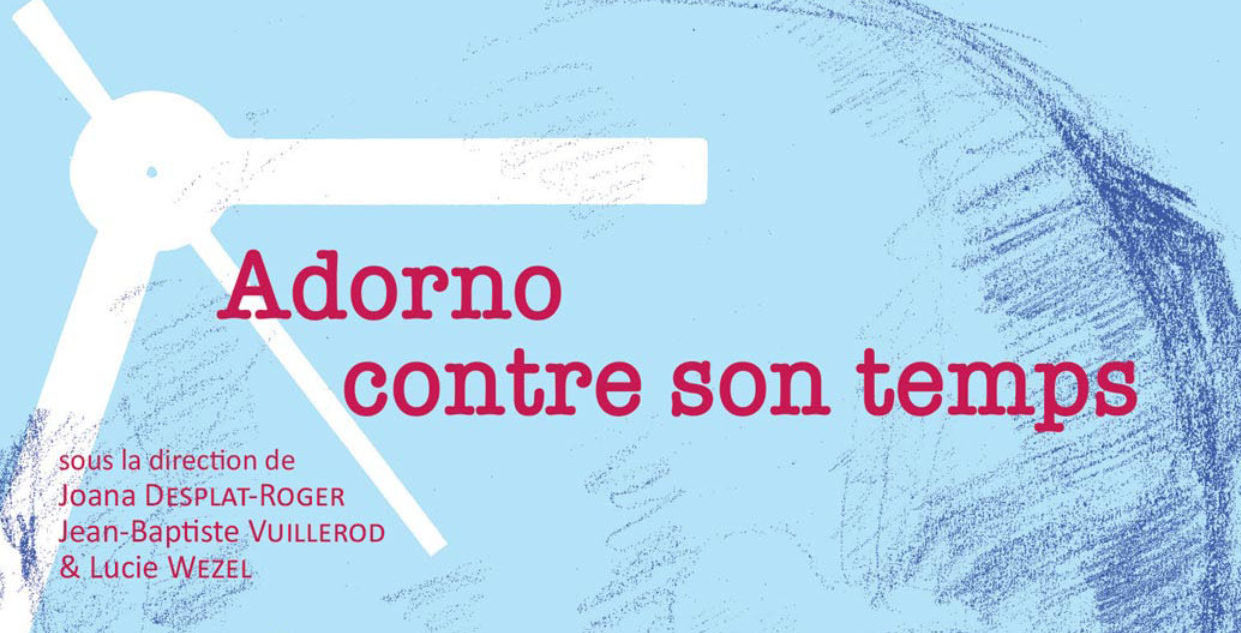The Physics of the Time Stream in JJ Abrams’ Serial Narrative
Francisco Saez de Adana Dprt. of Computer Science Research Collaborator at the Franklin Institute of American Studies University of Alcalá, Spain
[learn_more caption= »Abstract » state= »open »] Time travel is a narrative element that is widely used in literature, film and television. When addressing temporal displacement, it is necessary to establish a set of rules associated with the time stream that corresponds to physical laws or to a theory that supports the behavior of time travel. This paper examines how the time stream is articulated in the serial narrative of JJ Abrams, especially in Lost and Fringe. Elements of all the aforementioned theories are collected, but Abrams’ time stream is mainly influenced by the concept of parallel universes in the Marvel Universe and, to a lesser extent, the DC Universe. The basic element governing Abrams’ idea of time is the concept of alternate timelines. Abrams transfers to his stories the quantum concept. Another important element that appears in his series is how Abrams includes among the guidelines of his time stream different interpretations of the Schrödinger’s cat experiment.
1. Introduction
Physics is a term which comes from the Greek “physis”, which means reality or nature. Therefore, one of the most important tasks of physics as a science is to establish laws that explain natural phenomena. This part, although usually forgotten when this discipline is taught in school, where its mathematical aspects are prioritized, is as basic as when someone wants to consider «the nature of things as we currently see them», according to the definition of physics provided by Richard Feynman, one of the most important physicists of the 20th century[1]. The aim of this paper is to study the physical laws that explain nature as associated with the time stream in JJ Abrams’ serial narrative or to set out one or a series of theories that describe the behavior of time travel in his narratives. With this aim, the events of Lost and Fringe will be analyzed in an attempt to reconstruct the physical theories that better explain the time stream in these series.
Time travel is a narrative element widely used in literature, cinema and television. Because it is associated with the science-fiction genre and, sometimes, it is related to modern physical theories, such as quantum mechanics and Einstein’s theory of general relativity[2], there are several studies that attempt to explain the viability, from a physical point of view, of time travel. The general tendency of these studies is to evaluate, in terms of current knowledge of physical laws, the plausibility of the events of science fiction’s fantastic stories. With respect to time travel, most of these studies try to determine if, according to physical laws, the time travel that occurs in a given fiction is plausible, focusing on the paradoxes a given portrayal entails. In this way, it is interesting Umberto Eco’s work concerning Back to the Future or the countless number of essays that describe the impossibility of altering the past, mostly based on the grandfather paradox, that is to say, the effect caused by a time traveler if he traveled back to the past to kill one of his forefathers[3]. In all of these examples, the objective is to try to prove the coherence or incoherence of fictional narratives when these narratives are evaluated according to current knowledge of physical laws.
The objective of this paper is completely different. The idea is to explain the physical laws of the time stream of JJ Abrams’ narrative without mentioning the possible paradoxes that could be derived from the events of his series. In other words, the objective is not to evaluate the fantastic events of the series in terms of the physical laws that govern our reality. Rather, the objective is to consider the idea, which was expressed previously in the Feynman quotation, that physical laws explain nature as we currently see it. Feynman explains physics by comparing the world to a big chess game in which we are the observers; we do not know the rules, but we are allowed to observe the moves. From them, we can try to discover the rules, a task that in nature is impossible in its entirety. For this reason, it happens in physics that «for a long time, we will have a rule that generally works in an excellent way, even if we cannot follow the details, and later, we can discover a new rule»[4] , especially when new phenomena are observed. For this reason, new theories that try to explain reality appear throughout history because the perception of nature changes over time. The main objective of this paper is the suspension of disbelief, that is, the consideration of the facts of the series, even the most unbelievable facts, as physicists would consider real phenomena. Treating the events as “real”, the physical laws to explain them will be sought without mention of their impossibility. It is, in the end, a metafiction exercise of relating science and fiction, following Feynman’s statement that «our imagination is stretched to the maximum, not, as in fiction, to imagine things that are not real but to understand things that are there»[5]. That is, we will attempt to understand things in the way as the viewer perceives them in the series.
2. Some examples of physical lays that govern time travel in fiction
To totally clarify the objective of the paper and to introduce some of the theories that will be further used for Abrams’ narrative, this section shows that in stories with time shifts, there is, generally, a set of rules associated with the time stream that corresponds to some physical laws. It is not our purpose to be exhaustive, given the countless number of stories that address this subject, but to show some examples that are widely known by the general audience that illustrate perfectly the idea of the relationship of the time stream with some laws enunciated by physics throughout its history. These laws will be mentioned but not analyzed in depth because a detailed analysis will be dedicated to the series analyzed in this paper.
First, it is necessary to mention Back to the Future. In this trilogy, it can be said that the Chaos Theory fundamentally governs the time stream. Chaos Theory, which was formulated by Lorenz in the middle of the 20th century[6], is useful for studying systems in which a small variation in their initial conditions produces a great alteration in the behavior of the system. It has become popularly known as the so-called butterfly effect, thanks to the conference that Lorenz gave in 1972 in a meeting of The American Association for the Advance of Science entitled “Predictability, can a butterfly’s wingbeat in Brazil start a tornado in Texas?” In Back to the Future, any small alteration in the past produces large alterations in the present and future and, overall, such alterations are unpredictable; the time stream is characterized by a totally chaotic behavior. The Marvel Universe in American comic books, since X-Men’s Days of Future Past appeared in the 1980s, is governed by the theory of parallel universes, which appeared in the fifties and the sixties of the last century to make concrete and understandable some of the discoveries of quantum physics and general relativity. In this case, the idea is that «if two alternatives can interfere with each other, then somehow these two alternatives must exist simultaneously.»[7] Therefore, alterations in the past produce an alternate reality that gives rise to parallel universes. Finally, there is the scientific determinism of the film 12 Monkeys. Determinism holds that despite its complexity and practical unpredictability, the physical world evolves over time according to principles or rules fully predetermined, and chance is just an apparent effect. In 12 Monkeys, as in many other stories involving time travel, the traveler finds that the past is fixed and cannot undergo alterations. This carries, as a consequence, a cyclic idea of time in which the traveler is forced to repeat the same story and illustrates that time travel can only serve to obtain information to create a better future.
It is not our intention to be reductionist with this classification, nor is it our objective to pretend that all stories about time travel can be classified according to these three categories. The idea is to give examples of how physical laws can be found to explain the time stream in different stories. Countless stories can be found that fit perfectly in any of these categories, and many others can be found that combine several of them or are more related to other theories. Moreover, the objective is to perform the same exercise with the events narrated in JJ Abrams’ series, which do not totally fit with any of the categories mentioned in this section but include elements of all of them, as well as new elements.
3. Physical laws in Abrams’ narrative
Probably the most important story in Abrams’ narrative in which time travel plays a strong role is his new version of Star Trek, which was released in 2009. In one of the most intelligent attempts to justify a sequel in the history of cinema without doing a remake, Abrams begins the story with time travel that creates an alternate reality in which the new Star Trek stories will take place. In this way, new stories can be told, but the old stories remain in the continuity of the Star Trek universe. This premise explains, in itself, the behavior of the time stream in the Star Trek relaunch. The time stream is governed by the theory of alternate universes, which is characterized by what could be called the quantic behavior of the time stream. This idea is strongly based on the Marvel Universe as portrayed in Days of Future Past, which is one of the most important influences on Abrams’ work. Because Abrams’ Star Trek is not a television series (although it has its origin in one), it is not necessary to extend its analysis. However, it is important to mention it because the tendency towards a quantic vision of time travel is primordial in his serial narrative, although it is very often mixed with other elements.
The first major appearance of time travel in Abrams’ series is in the fifth episode of the fourth season of Lost. In the episode, entitled “The Constant”, Sayid and Desmond experience turbulence on their way to the freighter, prompting Desmond to experience some unexpected side effects, as his 1996 consciousness travels to 2004 and back repeatedly. The episode features the journey of the 1996 Desmond’s consciousness in a continuous narrative between the two periods. However, it is mainly the serie’s fifth season that is devoted to analyzing different time jumps that the characters suffer due to the side effects of the relocation of the island that John Locke had to perform at the end of the fourth season. In this way, some of the characters, after passing through different moments in the history of the island, are transported to 1977, just at the time when the Dharma Initiative came to the island to conduct their experiments. Therefore, this is the season in which the elements associated with the time stream are the most explicit of the show and, therefore, constitute the core of this paper’s analysis as far as the series Lost is concerned.
If we look at the events of this season, all of them seem to be trying to answer the following question: « can the future be changed? » Until well into the season, the answer seems to be “no”. It seems that this is a deterministic conception of time travel where travelers are doomed to perform some actions that will lead to events already known to be part of their future. Therefore, when Sayid tries to kill Ben when he is still a child, Sawyer and Kate save him and take him to where The Others are in order to cure him, fulfilling what seems to be Ben’s destiny. « Whatever happened, happened », says Daniel Faraday, who is the character who seems to have the clearest insight into the mechanisms of the time stream. He seems to be a victim of the cyclical conception of time; his mother sent him back to the island knowing that she would end her life almost thirty years ago. Therefore, it seems that this is a deterministic conception of time. However, as the season progresses, Faraday changes his mind and begins to consider that the facts of the future can be changed. Based on this idea, it would appear that we are heading for a chaotic design similar to that discussed with respect to Back to the Future. This does not seem to be the case because Faraday is able to predict what will happen when the hydrogen bomb is detonated; therefore, it does not seem that the time stream behaves chaotically because such behavior would imply an inability to predict the effects of altering the past.
Therefore, even in the season in question, there are elements that can be considered in line with a deterministic view of the time stream. There are also others closer to a chaotic conception. The theory that, from my point of view, best fits the events of the series is a quantum conception of temporal power, which serves to germinate ideas that will find their maximum expression in Fringe and will culminate in Star Trek. The key is what Faraday called variables, which are time travelers that can create some events or otherwise. These variables play the role of the observer in the famous experiment of Schrödinger’s cat. It is the observer who determines the state of the cat, or, in other words, creates the reality of the world among all the possibilities that may be. Therefore, these variables, as time travelers, will determine with their actions which of the infinite possible worlds is going to happen on the island. The next question would then be if the quantum concept of temporary current creates infinite parallel universes, which seems to be the most common implementation of quantum theory in fiction. In Lost, this does not seem to be the case; at the beginning of the sixth and final season, it seems that two alternate timelines have been created after the detonation of the hydrogen bomb, as narrated on the so-called flash-sideways, but as the season progresses, the spectator will see that this is not so.
However, parallel universes in fiction are universes generally separate in space and are usually referred to as different dimensions but share the same time. Therefore, in the 60s, when DC Comics renewed its superhero pantheon, it decided that the new superheroes would inhabit Earth-1, whereas the existing superheroes, which were created in the 40s, live on Earth-2. This means that when the Flash of Earth-2 travels to meet the Flash of Earth-1 in the classic “The Flash of Two Worlds”, the impression of the reader is that he is coming from elsewhere (another Earth) but that both characters are simultaneously in the 60s, the time of the publication of the story; therefore, the Flash of Earth-2 is 20 years older than when his adventures were published in the comics of the 40s. Different dimensions are always mentioned, but the way that they are represented in fiction is by means of a spatial separation. Furthermore, as Renato Giovanoli stated about many stories on time travel «the time travel is justified with the recourse to the fourth dimension.»[8] Following this idea, the fifth season of Lost extends the concept of parallel universes to what Charles Burnetts defined as «parallel time.»[9] If until now, parallel universes always referred to three spatial dimensions w1hile time converged, now parallelism (if we understand this as separation) happens in the fourth dimension. Whereas in the previous examples, we noted things that took place in what appeared to be different places but the same times, we now have things happening in the same space but at different times. Thus, we have events that are happening simultaneously in the same spatial location but at different times, and a new conception of « simultaneously » that refers, against the very meaning of the word, to space and not to time appears. Obviously, as happens in the DC Universe when Flash visits another world, the alternatives may also communicate with one another through time travel, as in this case. As space travelers can influence what happens in parallel universes and their actions have an impact on their own universes in the traditional quantum conception, time travelers in Lost influence the parallel times that they visit and also exert effects on their own time. The observer, as in Schrödinger’s cat experiment to demonstrate the uncertainty principle[10], is influencing the future of each of these parallel universes in time. This theory, which is subject to the uncertainty principle, allows for parallel times in order to understand this different behavior for different temporal alterations discussed above because, obviously, the observer effect is different in each case
This idea of a parallel time is particularly evident in two moments of the series. The first has already been mentioned, “The Constant” episode, where, Desmond lives simultaneously in two time instants, and facts from one instant influence the other. Desmond is a clear example of the observer related to the experiment of Schrödinger, whose actions have a fundamental effect on the creation of the quantum universe. Again, the influence of the superhero universes is clear, specifically, the influence of the DC Universe and the Crisis on Infinite Earths series, which chronicles the destruction of a multiverse consisting of infinite Earths. In Crisis, Pariah is condemned to travel through the different universes to see their destruction, which is another example of a conception of parallelism in space. Desmond is the damned traveler moving between different parallel universes, but in this case, the parallelism is temporary, reinforcing the idea of a quantum concept of the time stream influenced by the time traveler. The second moment, which highlights the idea of parallel time, is much more debatable, but I think it clarifies many elements of the series. It is, in this case, the presence of Jacob at different times of the last survivors of Oceanic flight. Although it could be interpreted in a linear way, that is, he was just there at the time and was part of what led these characters to the island, the fact that we did not know of the presence of Jacob until the end of the fifth season may mean that what Jacob does is traveling around parallel times and the meetings are taking place « simultaneously » with what happens on the island. This would add a new dimension to the fundamental narrative artifact of the series, which is that the narration of flashbacks and flash-forwards would be parallel times of this quantic parallel. Yet, one could extend this idea to previous narratives in the work of Abrams, as is the Alias series, where Rambaldi’s prophecies not only influence the events of the current time in the series are also modified by these events, i.e., the future affects the past in a relationship which could well be explained from a viewpoint of parallel times.
All of these quantic ideas find their maximum expression in the series Fringe, where the concept of parallel universes and different timelines is a constant in the series, beginning with the end of the first season. Again, the influence of superhero comics, in this case, both Marvel and DC, is obvious. Everything concerning the confrontation between the two parallel Earths has strong resemblance to Earth-1 and Earth-2 in the DC Universe and the Earth and the Counter-Earth in the Marvel Universe. On the other hand, the last season is practically an adaptation of Days of Future Past, with the observers playing the role of the sentinels. However, what is interesting in this case is the quantic conception, which is evident in Fringe. The time stream temporarily alters the creation of universes and alternate timelines, as previously mentioned. However, what is most interesting is that this quantic conception in Fringe is strongly related to Schrödinger’s cat experiment. Peter is not only a traveler between parallel universes, both spatial and temporal, but is also an observer who is responsible for the creation of an alternate timelines as a result of his appearance, which is similar to the situation involving Desmond in Lost. However, the fact of opening the box, as Schrödinger describes, and the influence that this action has found its narrative parallelism in the crossover between universes performed by Walter to rescue Peter. By crossing the portal linking the two universes, Walter becomes the observer who influences the facts and whose observation are a key element of the disturbances affecting the evolution of the time stream of these parallel universes. It is Walter who, in his role as the observer, as described in many episodes of the second season, « opens the box » and crosses the portal, which results in his having a definite influence on the time streams of both worlds.
However, if we are talking about observers in a series such as Fringe, it is important to analyse the roles of the characters who bear that name, The Observers. The Observers initially, in the manner of The Watchers in the Marvel Universe, are called to observe only the important events of the Multiverse without intervening in them. However, their mere presence is a disturbance to such events, as when Walter discovers the cure for Peter. In addition, there are situations in which they cannot avoid intervening, as when Peter is saved from drowning in Lake Reiden or, more specifically, when they establish a fascist state in the final season of the series. In a quantic conception of time, such as that dominating the narrative of JJ Abrams, the paper shows that the observer cannot be passive but has a decisive influence in shaping the time stream, which is generally expressed in the creation of parallel universes, either in time or in space.
4. Conclusions
This paper has analysed the time streams of the series of JJ Abrams from the points of view of physical laws and everything related to time travel. It has been seen that in fictional narratives, time travel generally corresponds to chaotic, deterministic or quantic perspectives. Although deterministic elements appear (there is little chaos in Abrams’ series) in some moments in Abrams’ narrative, we can say that this narrative, fundamentally, adopts the quantic perspective relative to the alteration of some event in the time stream. The role of the observer is essential, as in the Schrödinger experiments, and results in the creation of a series of parallel universes, which are usually associated with this quantic perspective. One of the major new features presented by Abrams’ series is that the parallelism of these different universes is not always given in three spatial dimensions as in most stories about time travel but in the fourth dimension of time, creating the concept of parallel times. In parallel times, events occur “simultaneously” in the same space but at different times so that these different time points interact.
Bibliography
Burnetts, Charles (2015). “Downwards is the Only Way Forwards: Dream Space, Parallel Time and Selfhood in Inception”, in Matthew Jones y Julia Ormrod (eds.): Time Travel in Popular Media. Essays on Film, Television, Literature and Video Games. Jefferson: McFarland, pp. 235-246.
Claremont, Chris and Byrne, John (1981). “Days of Future Past”. Uncanny X-Men 141-142, January- Febraury.
Eco, Umberto (1985). “Come si Viaggia nel Tempo”. L’Espresso, 17 de noviembre.
Feynman, Richard P. (1994). Six Easy Pieces. Essentials of Physics Explained by Its Most Brilliant Teacher. Reading: Addison-Wesley.
Fox, Gardner; Infantino, Carmine and Giella, Joe (1961). “The Flash of Two Worlds”. The Flash 123, September.
Giovannoli, Renato (2015). La Scienza della Fantascienza. Milán: Bompiani.
Motter, Adilson E. and Campbell, Davis K. (2013). “Chaos at Fifty”. Physics Today, 66 (5), pp. 27-33.
Schrödinger, Erwin (1974). What is Life? & Mind and Matter. Cambridge: Cambridge University Press.
Taylor, Edwin F. and Wheeler, John Archibald (1992). Spacetime Physics. Introduction to Special Relativity. New York: Freeman.
Wolf, Fred Alan (1990). Parallel Universes: The Search for Other Worlds. New York: Simon & Schuster.
Filmography
12 Monkeys. Directed by Terry Gilliam. Universal: 1985.
Back to the Future. Directed by Robert Zemeckis. Universal: 1985.
Fringe. TV series. Created by JJ Abrams, Alex Kurtzman and Roberto Orci. Fox: 2008-2013.
Lost. TV series. Created by JJ Abrams and Damon Lindelof. ABC: 2001-2006.
Star Trek. Directed by JJ Abrams. Paramount: 2009.
[1] Feynman, Richard P. Six Easy Pieces. Essentials of Physics Explained by Its Most Brilliant Teacher. Reading: Addison-Wesley, 1994, p. 46.
[2] Taylor, Edwin F. and Wheeler, John Archibald. Spacetime Physics. Introduction to Special Relativity. New York: Freeman, 1992.
[3] Giovannoli, Renato. La Scienza della Fantascienza. Milán: Bompiani, 2015.
[4] Feynman, Richard P. Six Easy Pieces. Essentials of Physics Explained by Its Most Brilliant Teacher, op. cit., p. 46.
[5] Íbidem, p. 19.
[6] Motter, Adilson E. and Campbell, Davis K. (2013). “Chaos at Fifty”. Physics Today, 66 (5), pp. 27-33.
[7] Wolf, Fred Alan. Parallel Universes: The Search for Other Worlds. New York: Simon & Schuster, 1990.
[8] Giovannoli, Renato. La Scienza della Fantascienza, op. cit., 2015, p. 291.
[9] Burnetts, Charles. “Downwards is the Only Way Forwards: Dream Space, Parallel Time and Selfhood in Inception”, en Matthew Jones y Julia Ormrod (eds.): Time Travel in Popular Media. Essays on Film, Television, Literature and Video Games. Jefferson: McFarland, 2015, 236.
[10] Schrödinger, Erwin. What is Life? & Mind and Matter. Cambridge: Cambridge University Press, 1974.


